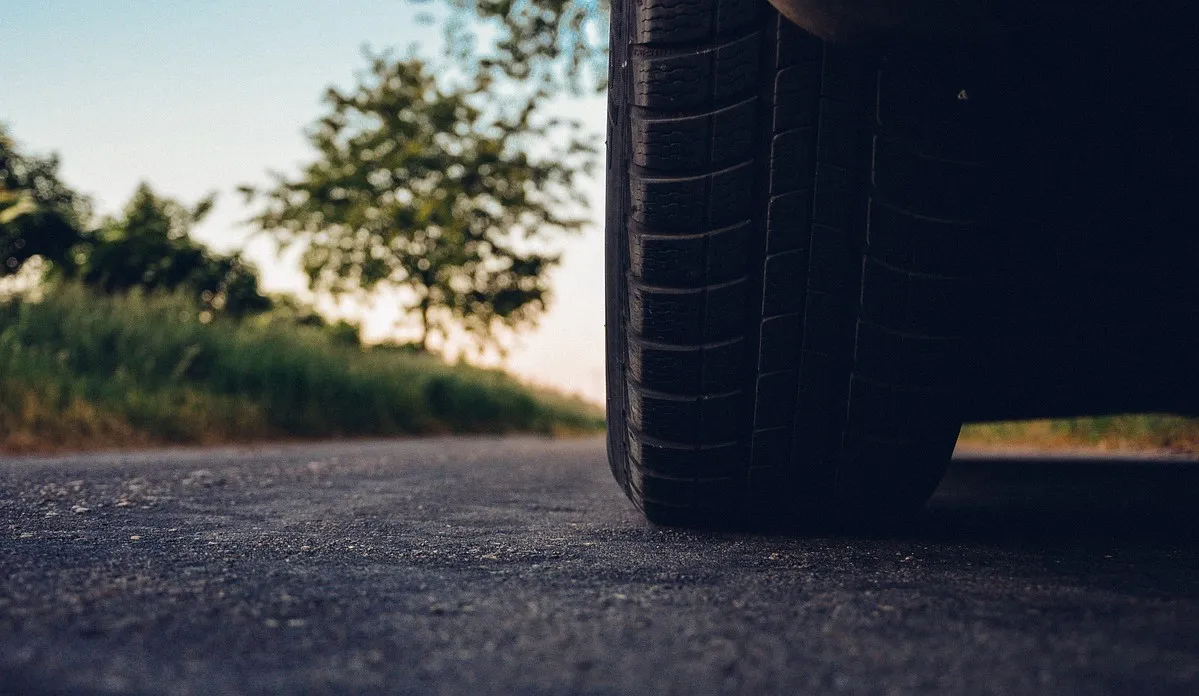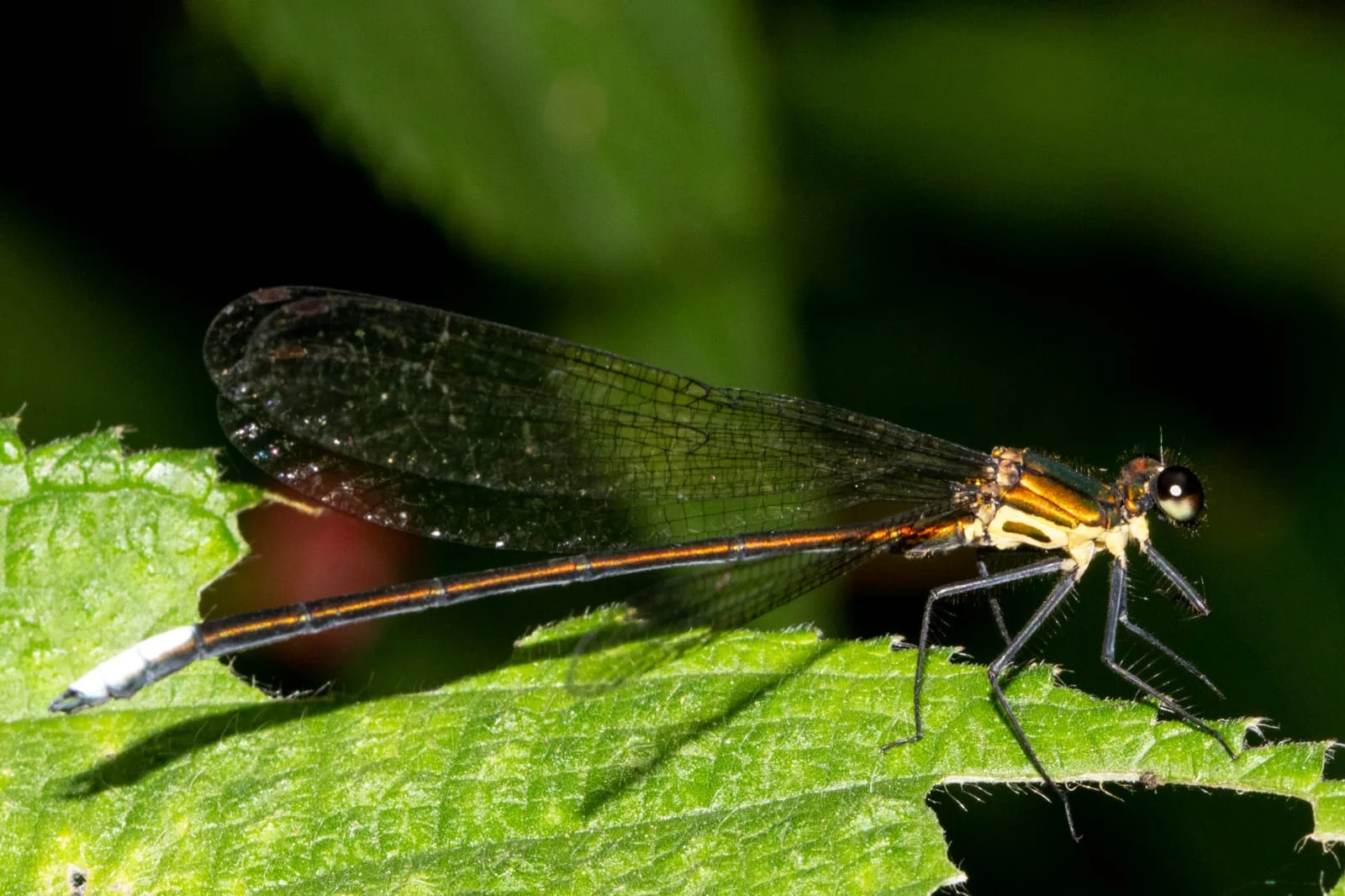- Courses
- GS Full Course 1 Year
- GS Full Course 2 Year
- GS Full Course 3 Year
- GS Full Course Till Selection
- Online Program
- GS Recorded Course
- NCERT (Recorded 500+ Hours)
- Polity Recorded Course
- Geography Recorded Course
- Economy Recorded Course
- AMAC Recorded Course
- Modern India, Post Independence & World History
- Environment Recoded Course
- Governance Recoded Course
- Science & Tech. Recoded Course
- International Relations and Internal Security Recorded Course
- Disaster Management Module Course
- Ethics Recoded Course
- Essay Recoded Course
- Current Affairs Recoded Course
- CSAT
- 5 LAYERED ARJUNA Mentorship
- Public Administration Optional
- ABOUT US
- OUR TOPPERS
- TEST SERIES
- FREE STUDY MATERIAL
- VIDEOS
- CONTACT US
PLACES IN NEWS 3rd JANUARY 2025
PLACES IN NEWS 3rd JANUARY 2025
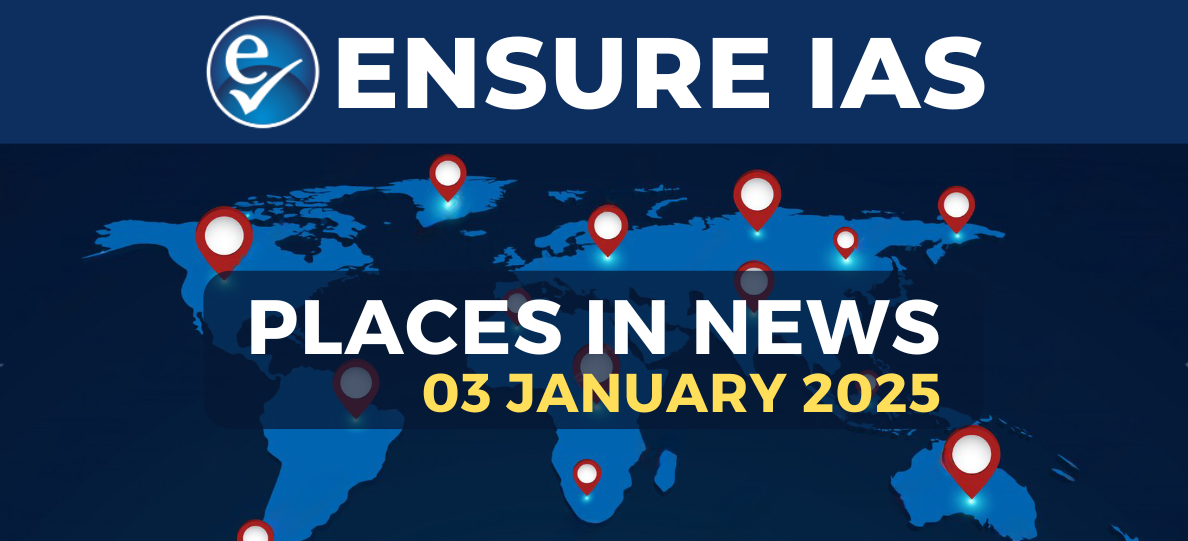
Shendurney Wildlife Sanctuary
Why in news?
- A four-day faunal survey at Shendurney Wildlife Sanctuary, Kerala, has enriched its biodiversity records with remarkable findings.
- Organized by the Kerala Forest Department and the Travancore Natural History Society, the survey recorded 334 species, including 184 insects, 62 spiders, 41 odonates, and 16 herpetofauna.
- Highlights include the sighting of day geckos and the largest venomous snake, King Cobra, confirming the sanctuary's ecological richness. Rare species like the Nilgiri Langur and Malabar Civet were also documented.
About Shendurney Wildlife Sanctuary:
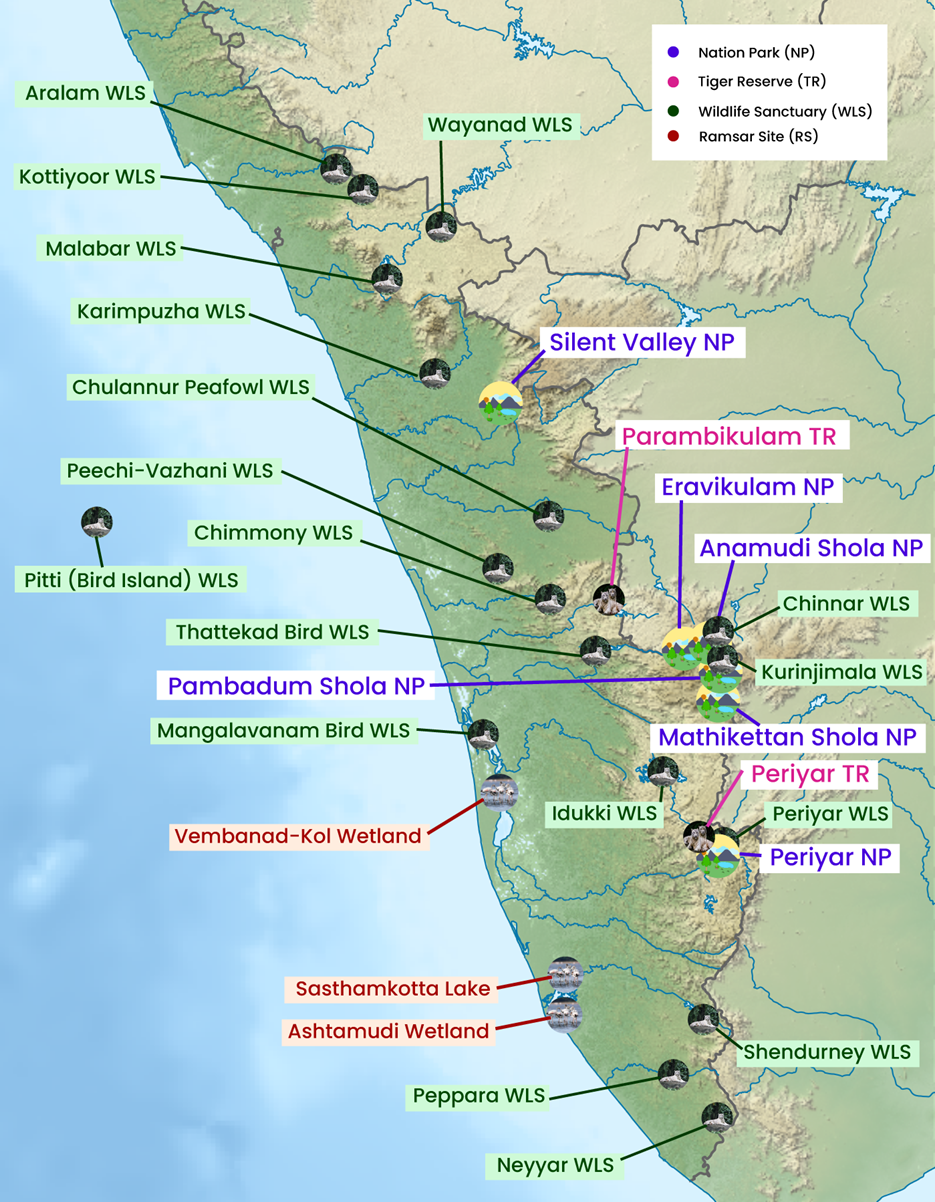
- Geography:
- Shendurney Wildlife Sanctuary, located in the Western Ghats of Kerala, India, spans 172 square kilometres within the Kollam district.
- It is part of the Agasthyamalai Biosphere Reserve, a UNESCO-recognised hotspot for biodiversity. The sanctuary is named after the Chenkurinji tree (Gluta travancorica), an endemic species found in its lush forests.
- The sanctuary's topography is dominated by undulating terrain, steep ridges, and deep valleys, ranging in elevation from 90 to 1,650 meters above sea level. The highest peak is Pandimala, offering breathtaking views of the region's rich landscape.
- Rivers such as the Shendurney River, a tributary of the Kallada River, flow through the sanctuary, contributing to its water-rich ecosystem.
- The Thenmala Dam, built on the Kallada River, lies adjacent to the sanctuary and supports regional irrigation and hydropower needs.
- Shendurney experiences a tropical monsoon climate, with heavy rainfall during the monsoon season and moderate temperatures throughout the year. Annual rainfall averages between 2,000 and 2,500 millimetres, nurturing its dense vegetation and diverse ecosystems.
- Flora and Fauna:
- The flora is predominantly tropical evergreen and semi-evergreen forests, interspersed with grasslands and patches of deciduous forests. Apart from the iconic Chenkurinji tree, the sanctuary hosts medicinal plants, orchids, and rare trees like Vateria indica and Hopea parviflora.
- The sanctuary teems with fauna, including large mammals such as Indian elephants, gaurs, leopards, and tigers.
- It is home to endemic species like the Nilgiri langur, lion-tailed macaque, and the elusive Malabar civet.
- Reptiles such as the king cobra and the Travancore tortoise, along with diverse amphibians, insects, and birds, further enhance its biodiversity.
- Related Protected areas:
- As part of the Agasthyamalai Biosphere Reserve, Shendurney is one of the key protected areas, along with Neyyar Wildlife Sanctuary and Peppara Wildlife Sanctuary in Kerala and Kalakad-Mundanthurai Tiger Reserve in Tamil Nadu.
- Together, these sanctuaries preserve the unique biodiversity of the Southern Western Ghats, supporting conservation and research efforts.
Moldova
Why in news?
Moldova faces a severe energy crisis as the flow of Russian gas to the country has ceased, disrupting its energy supply and economy.
About Moldova:

- Geography and climate:
- Moldova, a small landlocked country in Eastern Europe, spans 33,846 square kilometres. It shares borders with Ukraine to the north, east, and south, and Romania to the west.
- The terrain is primarily rolling plains, with the Dniester River flowing through its eastern regions and forming a vital waterway.
- Moldova’s climate is temperate-continental, marked by cold winters and warm summers.
- The capital, Chișinău, lies in the centre of the country, serving as its political and economic hub. Fertile soil supports agriculture, particularly vineyards, making Moldova a key wine producer.
- Current energy Crisis:
- Moldova faces an acute energy crisis after the cessation of Russian gas supplies, which historically accounted for a significant portion of its energy needs.
- The crisis has exposed Moldova's heavy dependence on a single supplier and its vulnerability to geopolitical tensions.
- The Transnistria region, a self-declared republic in Moldova’s eastern part, complicates the energy situation. Transnistria hosts the Kuchurgan Power Plant, powered by Russian gas, which supplies electricity to parts of Moldova. However, political tensions between Chișinău and Tiraspol (the capital of Transnistria) have disrupted reliable energy cooperation.
- Without Russian gas, Moldova has struggled to secure alternative energy sources. The government has turned to Romania and European Union countries for assistance, importing electricity and natural gas at higher costs. These measures, though crucial, have led to skyrocketing energy prices, severely impacting households and industries.
- To mitigate the crisis, Moldova is actively pursuing energy diversification, including renewable energy projects and interconnections with European energy grids. Financial support from the EU and international donors has provided temporary relief but highlights the long-term need for energy independence.
Montenegro
Why in news?
A tragic shooting spree in Montenegro claimed the lives of twelve people, leaving the nation in shock. The incident occurred in the city of Cetinje, where a gunman opened fire on neighbours and passers-by following a family dispute.
About Montenegro:

- Geography:
- Montenegro is a small country in South-eastern Europe, located on the Adriatic Sea with a total area of 13,812 square kilometres. It borders Croatia to the west, Bosnia and Herzegovina to the northwest, Serbia to the northeast, Kosovo to the east, and Albania to the south.
- The country's topography is marked by rugged mountains, deep river canyons, and a beautiful coastline. The Bay of Kotor, a natural harbour, is one of the most scenic parts of the country.
- Montenegro’s climate varies from Mediterranean along the coast to continental in the inland areas.
- History and establishment:
- Montenegro has a rich history, shaped by the influence of various empires and neighbouring regions.
- The region was inhabited by Illyrians and later became part of the Roman Empire. In the Middle Ages, it was ruled by the Byzantine and Ottoman Empires, and its strategic location made it a key area in the Balkans.
- The country was once part of Yugoslavia until its dissolution in the 1990s. Following the breakup, Montenegro joined Serbia in a union called the State Union of Serbia and Montenegro until it declared independence in 2006. This marked a significant moment in its formation as a sovereign state.
- International participation:
- Montenegro became a member of the United Nations in 2006 and later joined NATO in 2017, solidifying its place in the international community.
- It has also been a candidate for membership in the European Union (EU) since 2012, with ongoing negotiations on various policy reforms. Montenegro is part of the Balkans’ integration into European organisations, reflecting its desire for closer ties with the West.
New Orleans
Why in news?
On January 1, 2025, at approximately 3:15 a.m. CST, Shamsud-Din Jabbar, a 42-year-old U.S. Army veteran, drove a pickup truck into a crowd on Bourbon Street in New Orleans, resulting in at least 15 fatalities and 35 injuries, including two police officers.
About New Orleans:
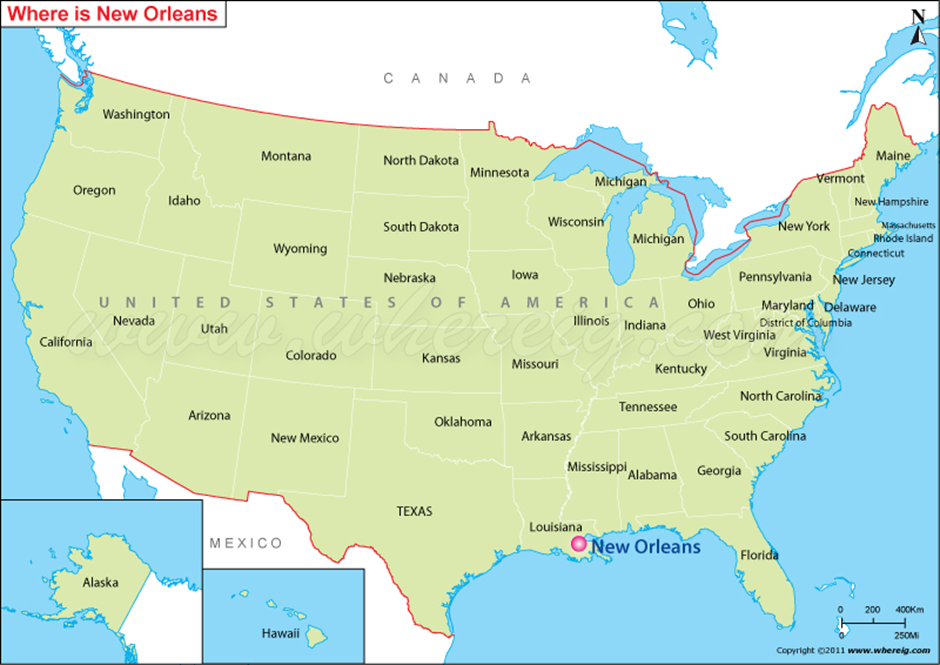
- New Orleans, located in Louisiana, is known for its rich cultural heritage, vibrant music scene, and annual Mardi Gras festival.
- Founded in 1718 by the French, it was later ceded to the United States in the 1803 Louisiana Purchase.
- The city's history reflects French, Spanish, and African influences, shaping its unique Creole and Cajun culture.
- New Orleans is famous for its distinct architecture, including the French Quarter and St. Louis Cathedral.
- The city serves as a hub for jazz music, with iconic venues like Preservation Hall.
- It became a U.S. state when Louisiana was admitted to the Union on April 30, 1812, as the 18th state.
- New Orleans is a significant port city and plays a major role in the U.S. economy, particularly in oil, gas, and shipping industries.
Recent Terror Attack:
- On January 1, 2025, a terror attack occurred in New Orleans, with a vehicle driven by Shamsud-Din Jabbar, a 42-year-old Army veteran, ploughing into a crowd on Bourbon Street.
- The attack resulted in 15 fatalities and 35 injuries, including two law enforcement officers.
- Jabbar engaged in a shootout with police after the crash, ultimately being killed by law enforcement.
- Authorities discovered an ISIS flag on the truck, indicating the act was likely terrorist-related.
- The FBI is investigating Jabbar's motivations and affiliations, though they believe he acted alone.
- This attack is treated as an act of terrorism, and New Orleans officials have heightened security measures in response.
Past Deadly Terror Attacks Worldwide:
|
Attack |
Location |
Date |
Fatalities |
Description |
|
9/11 Terror Attacks |
United States |
September 11, 2001 |
2,977 deaths |
Al-Qaeda hijacked planes, crashing into the World Trade Centre and the Pentagon. |
|
Mumbai Terror Attacks |
India |
November 26, 2008 |
166 |
10 gunmen attacked hotels and train stations, coordinated by Lashkar-e-Taiba. |
|
Paris Attacks (Bataclan) |
France |
November 13, 2015 |
130 |
Coordinated attacks by ISIS on multiple locations. |
|
Tikrit Attack |
Iraq |
June 23, 2009 |
110+ |
Suicide bombers targeted military recruits in Tikrit. |
|
Christchurch Mosque Attacks |
New Zealand |
March 15, 2019 |
51 |
A lone gunman opened fire at two mosques. |
|
London Bombings |
United Kingdom |
July 7, 2005 |
52 |
Suicide bombers targeted the Tube and a bus. |
North Sea
Why in news?
- Recent assessments have revealed that the North Sea harbours substantial mineral resources, potentially offering trillions of dollars in value.
- The Norwegian Petroleum Directorate reports that metals like magnesium, niobium, cobalt, and rare earth elements are present in quantities sufficient to meet global consumption for many years.
About North sea:
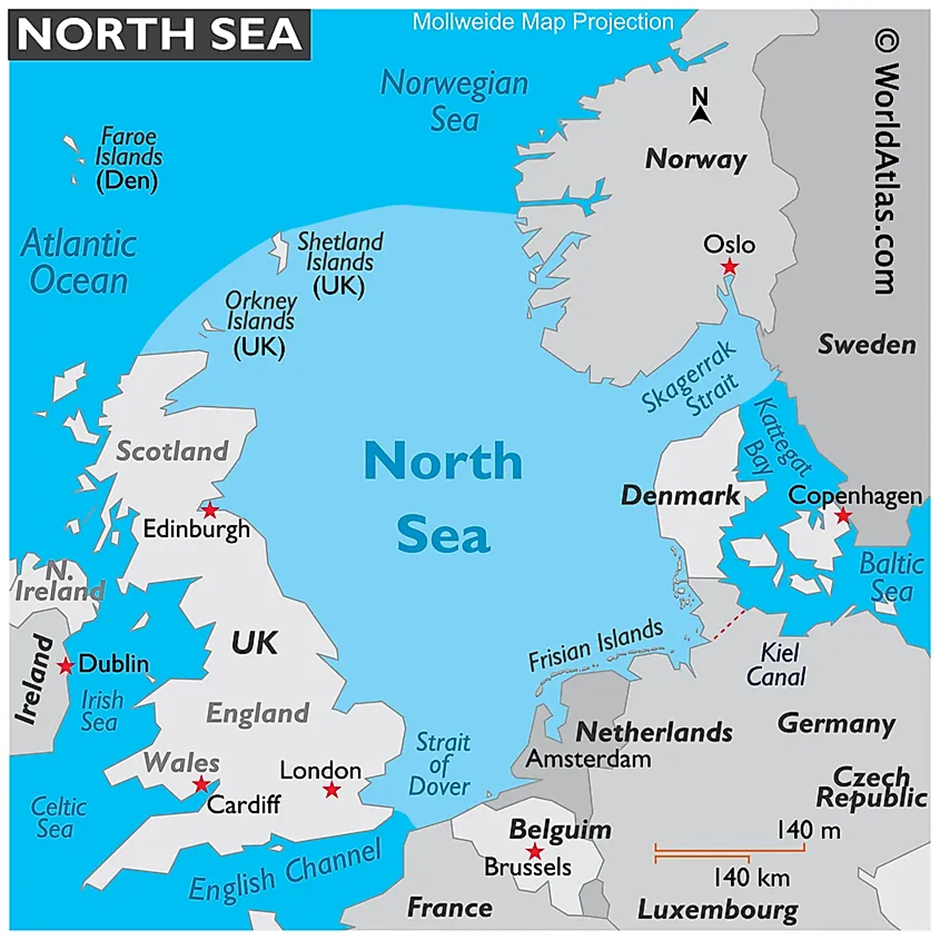
- Geography and Location
- The North Sea is a large body of water located in Northern Europe, bordered by several countries.
- It is an extension of the Atlantic Ocean, connected to the English Channel to the south and the Norwegian Sea to the north.
- The North Sea is bounded by the United Kingdom to the west, Norway to the northeast, Denmark to the east, Germany, the Netherlands, and Belgium to the south, and Scotland to the north.
- The North Sea's surface area is about 575,000 square kilometres, with an average depth of around 95 meters. The Skagerrak and Kattegat straits connect it to the Baltic Sea.
- Climate and Ocean Currents
- The climate of the North Sea is highly influenced by the Atlantic Ocean and westerly winds, resulting in a temperate maritime climate.
- Ocean currents, such as the North Atlantic Drift, bring warm water from the Gulf Stream, helping to moderate temperatures in the North Sea, especially in Norway and the UK.
- These currents play a key role in maintaining relatively mild winters and moderate temperatures, which benefits both marine life and human activities.
- Winter storms and low-pressure systems from the Atlantic occasionally affect the North Sea, but the region is equipped with well-developed storm surge barriers and coastal defences to mitigate potential damage.
- The stability of the North Sea's climate and ocean currents helps ensure year-round trade operations by maintaining navigability for commercial shipping.
- The shipping lanes in the North Sea remain operational even during the colder months, thanks to the influence of warm currents and relatively mild winter conditions, which prevents freezing.
- Furthermore, these favourable conditions allow for continuous fishing operations and energy production, contributing to the region's sustained economic importance.
- Natural Resources
- The North Sea is rich in a variety of natural resources, particularly hydrocarbons such as oil and natural gas.
- The North Sea oil fields are among the largest in the world, discovered in the 1960s, and have played a significant role in meeting the energy demands of Europe.
- Offshore oil rigs are extensively developed, with significant reserves in the UK sector, Norwegian sector, and the Dutch sector.
- The North Sea also contains abundant mineral deposits, including sand, gravel, and limestone, which are crucial for construction and industrial use.
- It is rich in fish and shellfish resources, supporting vital fishing industries in countries like Norway, Denmark, and the UK.
- Renewable energy resources, particularly offshore wind energy, are growing rapidly in the region, with many offshore wind farms now operational.
- Rare earth metals and other minerals are also being explored in the North Sea seabed, with growing interest in their potential for supporting emerging technologies.
- Role in Promoting International Trade and Connectivity
- The North Sea plays a crucial role in international trade, serving as a major shipping route connecting Europe with the rest of the world.
- The sea is a vital corridor for the movement of goods, including raw materials, energy resources, consumer products, and manufactured goods.
- Ports along the North Sea coast, such as Rotterdam (Netherlands), Hamburg (Germany), and Aberdeen (Scotland), serve as key international trade hubs, handling millions of tonnes of cargo annually.
- North Sea shipping lanes connect with the wider European maritime network, facilitating trade to and from Asia, North America, and other parts of the world.
- The English Channel, a narrow passage at the southern edge of the North Sea, allows direct access to the North Atlantic Ocean, further enhancing trade routes.
- Additionally, the North Sea is integral to energy trade, as oil and gas extracted from the region are exported via pipelines and tanker ships to countries across Europe.
|
UPSC CSE PYQs Q. Consider the following countries:
How many of the above countries have a border with the North Sea? (2024)
Answer: Option B Q2. Which of the following are in Agasthyamala Biosphere Reserve? (2019)
Answer: Option A
|
|
Also Read |
|


